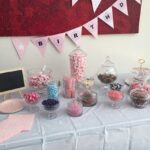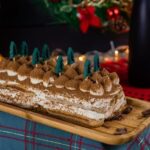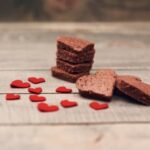Easter Cake Decorating has become an integral part of the holiday celebration, bringing joy and creativity to the table. This age-old tradition allows individuals to express their artistic skills while adding a festive touch to their Easter gatherings. With each cake becoming a canvas for imagination and craftsmanship, it’s no wonder that this art form continues to captivate bakers and dessert enthusiasts around the world.
In this article, we will delve into the intricate world of Easter Cake Decorating, exploring its origins and significance in celebrating the holiday. We will discuss various cake options that serve as the perfect base for creating stunning Easter-themed designs. Additionally, we will provide comprehensive guidance on essential tools and supplies needed to achieve professional-looking cake decorations.
As Easter is synonymous with the arrival of spring, we will explore ways to incorporate natural elements into cake designs. From fresh flowers to blooming meadows, we will guide readers through techniques that embody the spirit of the season. Furthermore, we will provide insights on utilizing food coloring to enhance Easter cake designs, highlighting how vibrant colors can transform an ordinary cake into a work of edible art.
Join us as we embark on a journey through various techniques, shapes, and finishes in Easter Cake Decorating. From mastering buttercream and fondant techniques to showcasing jaw-dropping examples of decorated cakes, this article aims to inspire readers with creativity and skillful execution. So why wait? Let’s celebrate Easter in style with beautifully decorated cakes that are as delicious as they are visually stunning.
The Perfect Canvas
Choosing the right cake base is crucial when it comes to Easter cake decorating. Different flavors and textures can enhance the overall theme of the cake, making it a delightful centerpiece for your Easter celebration. There are several options to consider, each bringing its own unique characteristics to the table.
One popular choice for an Easter cake base is a classic sponge cake. Its light and fluffy texture provide a delicate canvas for intricate decorations. The simplicity of a sponge cake allows the focus to be on the design and colors used, creating a visually stunning Easter-themed masterpiece.
For those who prefer something richer and indulgent, chocolate cake is an excellent choice. Not only does it provide a decadent flavor, but the dark color can also offer depth to your decorations. Whether you opt for a simple ganache drip or intricate chocolate curls, this base will surely satisfy any chocoholic’s cravings.
Another option that complements the spirit of Easter is carrot cake. With its warm spices and moist texture, carrot cake adds an earthy element to your creation. It pairs perfectly with cream cheese frosting and can be decorated with edible carrots or traditional Easter motifs.
When choosing the ideal cake base for Easter, consider not only taste preferences but also how it will interact with your chosen decorations. The right combination can truly elevate your cake into a work of art that embodies the joy and spirit of this festive holiday.
| Cake Base | Characteristics |
|---|---|
| Sponge Cake | Light and fluffy texture; perfect canvas for intricate decorations |
| Chocolate Cake | Rich flavor; dark color adds depth to decorations |
| Carrot Cake | Warm spices; moist texture; pairs well with cream cheese frosting |
Tools of the Trade
Decorating cakes for Easter can be a delightful and rewarding activity. However, to achieve beautiful and professional-looking results, it is essential to have the right tools at your disposal. In this section, we will explore the essential supplies needed for Easter cake decorating and suggest additional tools that can elevate your creations.
Fundamental Tools
- Piping Bags: Piping bags are a must-have tool for creating intricate designs on your Easter cake. Look for reusable or disposable options that are easy to handle and clean.
- Spatulas: Different sizes of spatulas will come in handy for spreading buttercream, smoothing surfaces, and achieving clean edges on your cake.
- Molds: Invest in a variety of molds such as flower molds, leaf molds, or Easter-themed molds like bunny shapes or egg shapes. These molds can give your decorations an extra level of detail and consistency.
Additional Tools
- Offset Spatula: An offset spatula is an excellent tool for applying frosting smoothly around the sides of the cake without disturbing the top surface.
- Pastry Brushes: Pastry brushes are useful for brushing syrups or glazes onto your cakes or adding edible glitter to create shimmering effects.
- Cake Turntable: A cake turntable makes the decorating process easier by allowing you to rotate the cake as you work on different sides. This ensures even distribution of frosting and enhances precision during decoration.
Tips
- Quality is key when it comes to choosing your tools. Investing in good-quality supplies will make a noticeable difference in the final result.
- Keep your tools clean throughout the decorating process to avoid cross-contamination of colors and maintain a professional finish.
- Experiment with different techniques using these tools to unleash your creativity and find unique ways to decorate your Easter cakes.
By having these essential supplies along with some additional tools at hand, you will be well-equipped to create stunning Easter cake decorations. Whether you are a beginner or an experienced decorator, the right tools can make all the difference in achieving a professional and visually appealing result. In the next section, we will explore how to incorporate spring elements into your Easter cake designs for an extra touch of natural beauty.
Natural Inspiration
Easter is a time of celebration and new beginnings, and what better way to capture the essence of spring than by incorporating natural elements into your cake designs? By integrating fresh flowers, blooming meadows, or bird’s nests onto your cakes, you can truly elevate the Easter-themed decorations. In this section, we will explore different ways to bring the beauty of nature onto your cakes.
Fresh Flowers and Edible Blossoms
One of the simplest yet most impactful ways to incorporate spring elements into your cake designs is by adding fresh flowers or edible blossoms. You can use flowers that are commonly associated with Easter such as daisies, lilies, or tulips.
Before placing them on the cake, make sure to separate the flower stems from their blooms so that they don’t come in direct contact with the cake. Additionally, ensure that none of the selected flowers are toxic or harmful if accidentally ingested.
If you prefer edible blossoms over fresh flowers, there are several options available. Candied violets or rose petals can be used as attractive garnishes on cakes. Alternatively, you can make your own edible blossoms using sugar paste or gum paste. This will allow you to create intricate blossoms that match your desired color palette for the cake.
Creating Realistic Landscapes
Another way to incorporate spring elements into your cake designs is by creating realistic landscapes. You can achieve this by using various techniques such as piping grass with green buttercream frosting or creating blooming meadows with piped flowers. To create grass, use a grass tip nozzle attachment for your piping bag and apply gentle pressure while moving in an upward motion.
For bird’s nests on the cake, consider using toasted shredded coconut to mimic a nest-like texture and place chocolate eggs or candy birds inside it. This will add a whimsical touch to your design and evoke feelings of joy and new life.
Incorporating natural inspiration into your Easter cake designs is a wonderful way to celebrate the season and create stunning edible masterpieces. By incorporating fresh flowers or edible blossoms, as well as creating realistic landscapes like blooming meadows or bird’s nests, you can truly capture the essence of spring. In the next section, we will explore how to enhance the visual appeal of your cakes by utilizing vibrant colors through food coloring techniques.
Vibrant Colors
Utilizing food coloring is an essential aspect of Easter cake decorating as it allows for the incorporation of vibrant colors that enhance the overall design. By using pastel shades and bright hues associated with Easter, decorators can create cakes that are visually appealing and in line with the holiday theme. In this section, we will explore the significance of incorporating these colors and provide techniques for achieving perfectly blended hues and gradients on the cake.
The Significance of Color
Colors play a vital role in conveying emotions, setting the mood, or representing a particular theme. When it comes to Easter, pastel shades like soft pinks, baby blues, mint greens, and pale yellows are often associated with this joyous holiday. These colors symbolize new beginnings, positivity, and renewal – perfect sentiments to capture in an Easter cake.
In addition to pastels, vibrant colors such as vivid purples and bold oranges can also be incorporated to create eye-catching designs. These brighter hues add a touch of excitement and energy to the cake, enhancing its overall look and appeal. Utilizing a mix of both pastels and vibrant shades can result in stunning creations that truly capture the spirit of Easter.
Techniques for Perfectly Blended Hues
Achieving perfectly blended hues on an Easter cake requires careful attention to detail and technique. One approach is to start with white icing as a base and gradually incorporate small amounts of food coloring while mixing. This method allows for more control over color intensity and ensures a smooth transition between different shades.
Another technique is to use the “dragging” or “marbling” method. This involves applying different colored icings side by side on a spatula or piping bag, then gently dragging it across the surface of the cake. The result is a beautifully marbled effect that blends various shades seamlessly.
For those who prefer gradient effects, consider using an airbrush or a spray bottle to apply diluted food coloring onto the cake. Start with a light shade at one end and gradually deepen the color as you move towards the other end. This technique creates a stunning ombre effect that adds depth and dimension to the overall design.
By understanding the significance of color in Easter cake decorating and incorporating these techniques for achieving perfectly blended hues, decorators can create visually striking cakes that capture the essence of the holiday.
Creative Shapes
One of the most exciting aspects of Easter cake decorating is the opportunity to experiment with creative shapes that capture the essence of the holiday. While traditional round cakes are always a classic choice, why not think outside the box and try Easter-inspired shapes like eggs, bunnies, or crosses?
These unique designs can add an extra touch of whimsy and fun to your Easter celebrations. Here are some suggestions on how to achieve these shapes easily using different types of cake pans or molds:
- Easter Egg Cakes: To create an egg-shaped cake, you can use a specifically designed egg-shaped cake pan. Simply pour your batter into the pan and bake according to your recipe’s instructions. Once cooled, gently remove the cake from the pan and decorate it with colorful icing and festive edible decorations.
- Bunny Cakes: You can create adorable bunny-shaped cakes by using special bunny-shaped cake pans or by carving a regular round cake into a bunny shape. If you’re feeling adventurous, you can also try molding bunny-shaped cakes using silicone molds or by sculpting them out of fondant or marzipan.
- Cross Cakes: For a more traditional approach, consider baking a cross-shaped cake using a cross-shaped cake pan. Once baked and cooled, you can decorate it with white icing for a simple and elegant look, or get creative by adding intricate details such as piped designs or edible flowers.
Remember that experimenting with different shapes doesn’t mean you have to sacrifice flavor. You can use any type of cake batter – be it sponge, chocolate, carrot – to create these Easter-inspired designs. The key is to ensure that the structural integrity of the cake remains intact throughout the baking process.
By venturing into unique shapes for your Easter cakes, you’ll not only impress your family and friends but also make your celebration truly memorable. These eye-catching creations will be sure to bring smiles and add an element of excitement to your Easter festivities. So don’t be afraid to think outside the box and let your creativity shine through your cake designs this Easter.
The Icing on the Cake
Mastering the art of cake decorating involves not only choosing the perfect cake base and incorporating vibrant colors but also achieving impeccable finishes. The icing plays a crucial role in creating a visually appealing and professional-looking Easter cake. Two popular options for frosting cakes are buttercream and fondant, each with its own unique techniques. In this section, we will delve into the intricacies of mastering these frosting techniques to elevate your Easter cake designs.
Buttercream is a classic choice for frosting cakes and offers versatility in texture and flavor. To achieve a smooth buttercream finish, start by crumb coating the cake with a thin layer of buttercream to seal in any crumbs. This step ensures that the final coat of buttercream looks clean and polished. Use an offset spatula or bench scraper to create smooth sides and sharp edges on your cake.
If you prefer a more polished look or want to create intricate designs on your Easter cake, fondant is an excellent choice. Fondant is a pliable icing made from sugar, water, and gelatin that can be rolled out thinly and draped over the cake to create a flawless surface.
To work with fondant, begin by kneading it until it becomes soft and pliable. Then roll it out to your desired thickness using a rolling pin coated with powdered sugar or cornstarch to prevent sticking.
Once you have your fondant rolled out, gently lift it using a rolling pin and carefully drape it over the cake. Smooth out any wrinkles or air bubbles using your hands or fondant smoothers. Trim off any excess fondant at the bottom of the cake using a sharp knife or pizza cutter. Fondant provides an excellent canvas for creating intricate decorations such as flowers, bows, or figures using molds or hand sculpting techniques.
To add additional texture or dimension to your Easter cake design, consider combining both buttercream and fondant techniques. For example, you can use buttercream to create a base layer with smooth sides and then use fondant for intricate decorations or sculpted figures. This combination allows for endless creative possibilities and adds visual interest to the cake.
| Buttercream Techniques | Fondant Techniques |
|---|---|
| Create smooth sides and sharp edges | Drape fondant over the cake for a flawless surface |
| Crumb coat the cake for a clean final coat of buttercream | Create intricate designs using molds or hand sculpting techniques |
| Use an offset spatula or bench scraper to achieve a polished look | Smooth out any wrinkles or air bubbles using fondant smoothers |
Edible Masterpieces
Easter cake decorating offers endless possibilities for creating stunning and edible works of art. In this section, we will explore some jaw-dropping examples of Easter-themed cake decorations that showcase the creativity and skill involved in this festive activity.
One impressive example is a three-tiered cake adorned with delicate sugar flowers in pastel shades. Each layer of the cake is covered in smooth buttercream icing, providing a flawless canvas for the intricate floral designs. The sugar flowers are painstakingly handcrafted and arranged to create a blooming meadow effect, complete with green grass piping along the base. This masterpiece truly captures the essence of spring and Easter through its vibrant colors and natural elements.
Another remarkable example showcases a bunny-shaped cake covered in fondant. The baker has expertly sculpted the fondant to create realistic fur textures, making the bunny look soft and fluffy. The use of food coloring adds depth to the fur by incorporating different shades of brown. To enhance the Easter theme, tiny edible carrots made from marzipan are strategically placed around the bunny, creating an adorable focal point for any Easter gathering.
Lastly, an awe-inspiring cross-shaped cake exemplifies elaborate piping techniques using royal icing. Intricate lace-like patterns cover every inch of the cross, achieving a delicate and elegant look. Pastel-colored flowers made from piped buttercream icing cascade down one side of the cross, adding pops of color against the white background. This striking creation highlights how careful attention to detail and skilled piping can transform a simple cake into a statement piece for Easter celebrations.
These examples serve as inspiration for aspiring bakers looking to take their Easter cake decorating skills to new heights. While they may appear daunting at first glance, they demonstrate what can be achieved with practice and patience. By experimenting with various techniques, colors, shapes, and themes, anyone can create their own edible masterpieces that celebrate Easter in style.
Concluding Thoughts
Easter cake decorating is not merely a festive activity, but it is also a cherished tradition that adds joy and excitement to the celebration of Easter. From choosing the perfect cake base to mastering buttercream and fondant techniques, this artistic endeavor allows individuals to express their creativity and create stunning edible masterpieces. As we conclude our exploration of Easter cake decorating, let us reflect on the importance of this activity in celebrating Easter in style.
Decorated cakes have long been associated with celebrations, and Easter is no exception. The act of decorating a cake for this holiday goes beyond aesthetics; it is a way to honor the significance of Easter and create beautiful edible creations that bring delight to all who see and taste them.
Whether it is incorporating spring elements like fresh flowers or creating intricate designs with piping and molding tools, each decorated cake becomes a unique representation of the joyous spirit of Easter.
What makes Easter cake decorating even more special is that it encourages individuals to unleash their creativity and experiment with different techniques and designs. It allows for personal expression and offers an opportunity for family members or friends to come together, working towards a common goal of creating a stunning centerpiece for their Easter celebrations. Through this shared experience, bonds are strengthened, traditions are passed down, and memories are created that will be treasured for years to come.
As we celebrate Easter in style with decorated cakes, let us remember that the true essence lies not only in the appearance but also in the love and effort put into each creation. Whether you choose traditional round cakes or venture into unique shapes and designs inspired by Easter themes, embrace the joy that comes with experimenting and allowing your imagination to run wild.
Celebrate the spirit of Easter through the art of cake decoration, knowing that each masterpiece created becomes a symbol of love, devotion, and celebration during this special time of year.
Frequently Asked Questions
How to decorate an Easter cake easy?
Decorating an Easter cake can be made easy by following a few simple steps. First, start with a basic cake of your choice, whether it’s vanilla, chocolate, or carrot. Next, cover the entire cake with a layer of pastel-colored buttercream frosting to create a smooth base.
Then, use different sized piping tips to pipe colorful flowers or patterns onto the cake’s surface. Alternatively, you can also place edible Easter-themed decorations such as bunnies or chicks on top of the cake for a festive touch. Finally, sprinkle some edible glitter or colored sugar over the frosting to add some extra sparkle and finish off your beautifully decorated Easter cake.
What traditional cake is eaten at Easter?
The traditional cake often eaten at Easter is called a Simnel cake. Originating from the United Kingdom, this fruitcake has been enjoyed for centuries during the Easter season. A Simnel cake typically consists of spiced fruits and nuts mixed into a rich batter and baked until golden brown.
What sets it apart from other cakes is the appearance of eleven marzipan balls placed on top, symbolizing the eleven disciples excluding Judas Iscariot. This deliciously fruity and nutty dessert is typically served during Easter celebrations as a sweet treat that everyone can enjoy.
How to decorate a cake with Easter eggs?
Decorating a cake with Easter eggs can be a fun and creative way to celebrate the holiday season. One popular method involves using chocolate eggs as decorative accents on your cake. Start by baking and frosting your preferred type of cake; buttercream or fondant work well for this particular decoration style.
Next, place chocolate eggs around the perimeter of the cake in an evenly spaced pattern or arrange them in clusters at various angles for added visual interest. You can also use different sizes or colors of chocolate eggs to create a more dynamic effect. Additionally, you may consider using edible grass or flower decorations alongside the eggs to further enhance the Easter theme of your cake design.

Welcome to my blog about home and family. This blog is a place where I will share my thoughts, ideas, and experiences related to these important topics. I am a stay-at-home mom with two young children. I hope you enjoy reading it! and may find some helpful tips and ideas that will make your home and family life even better!





